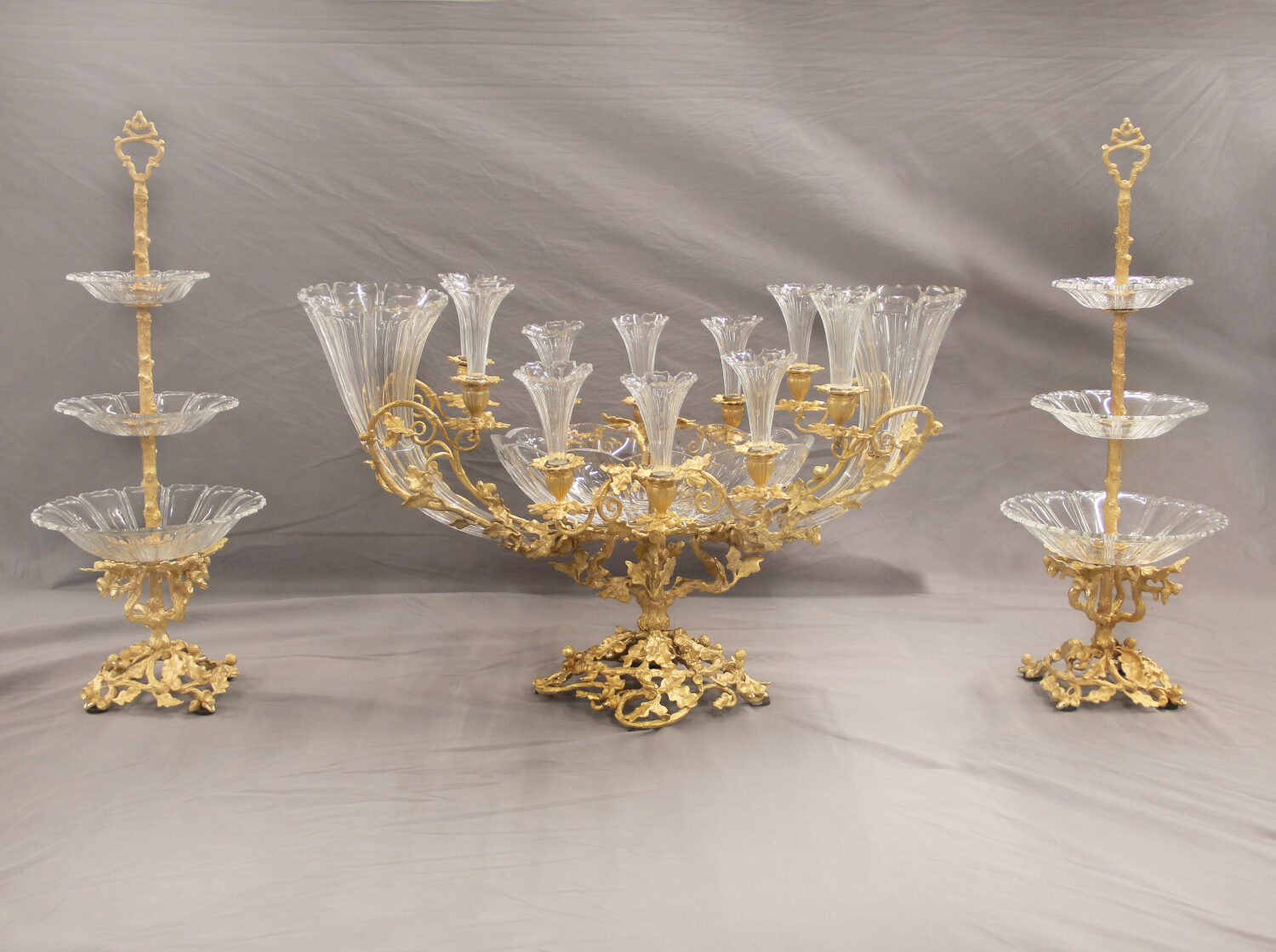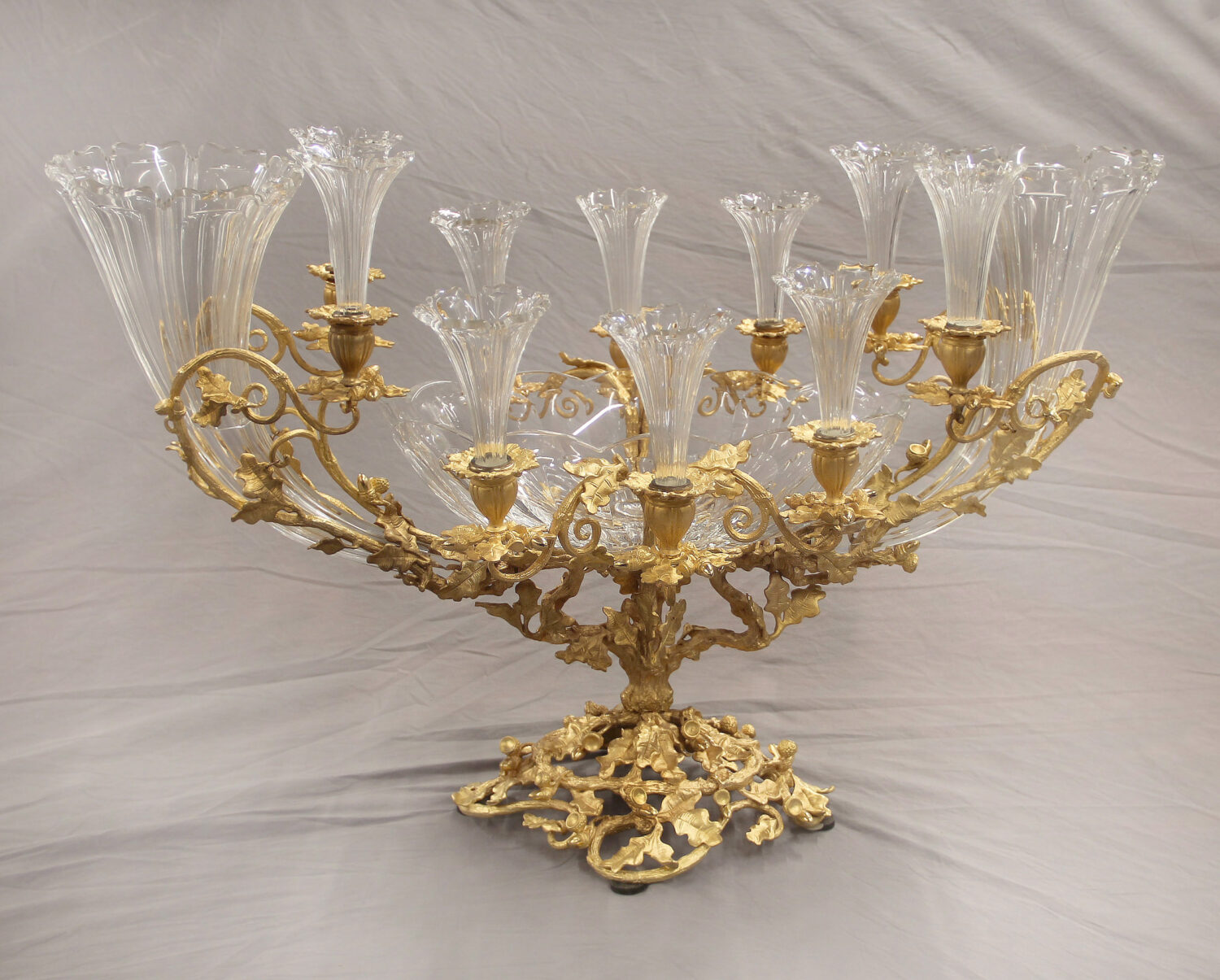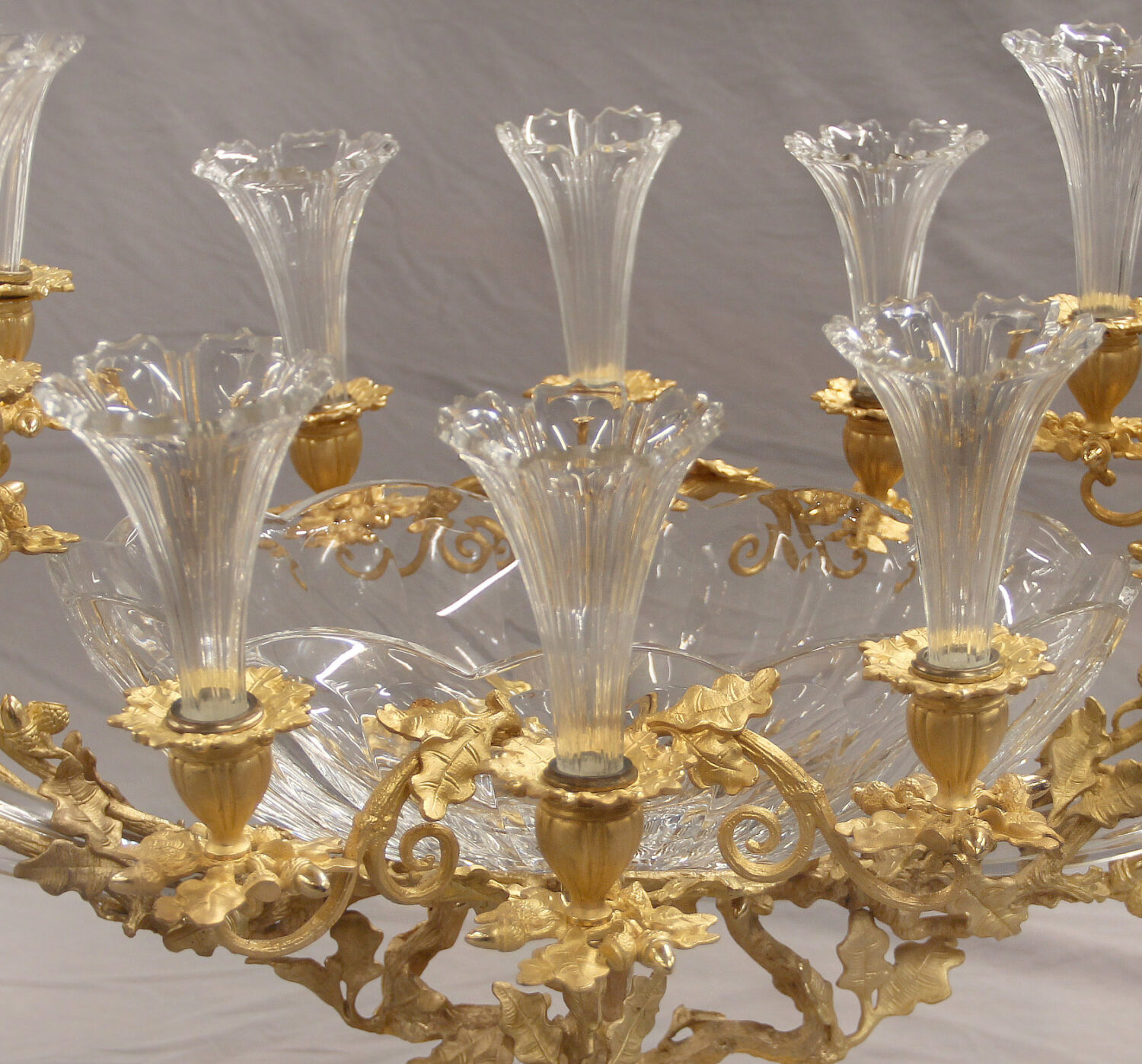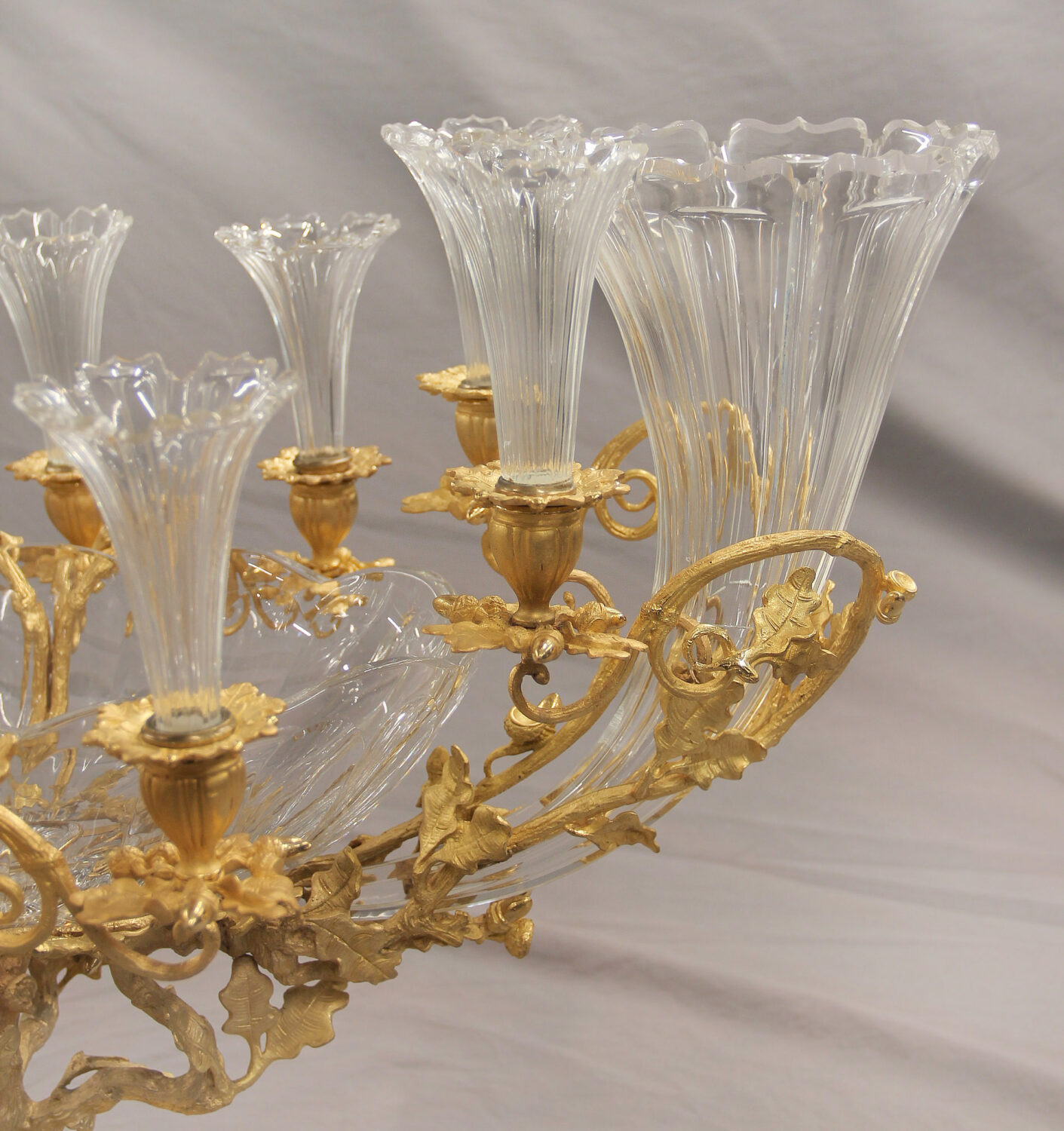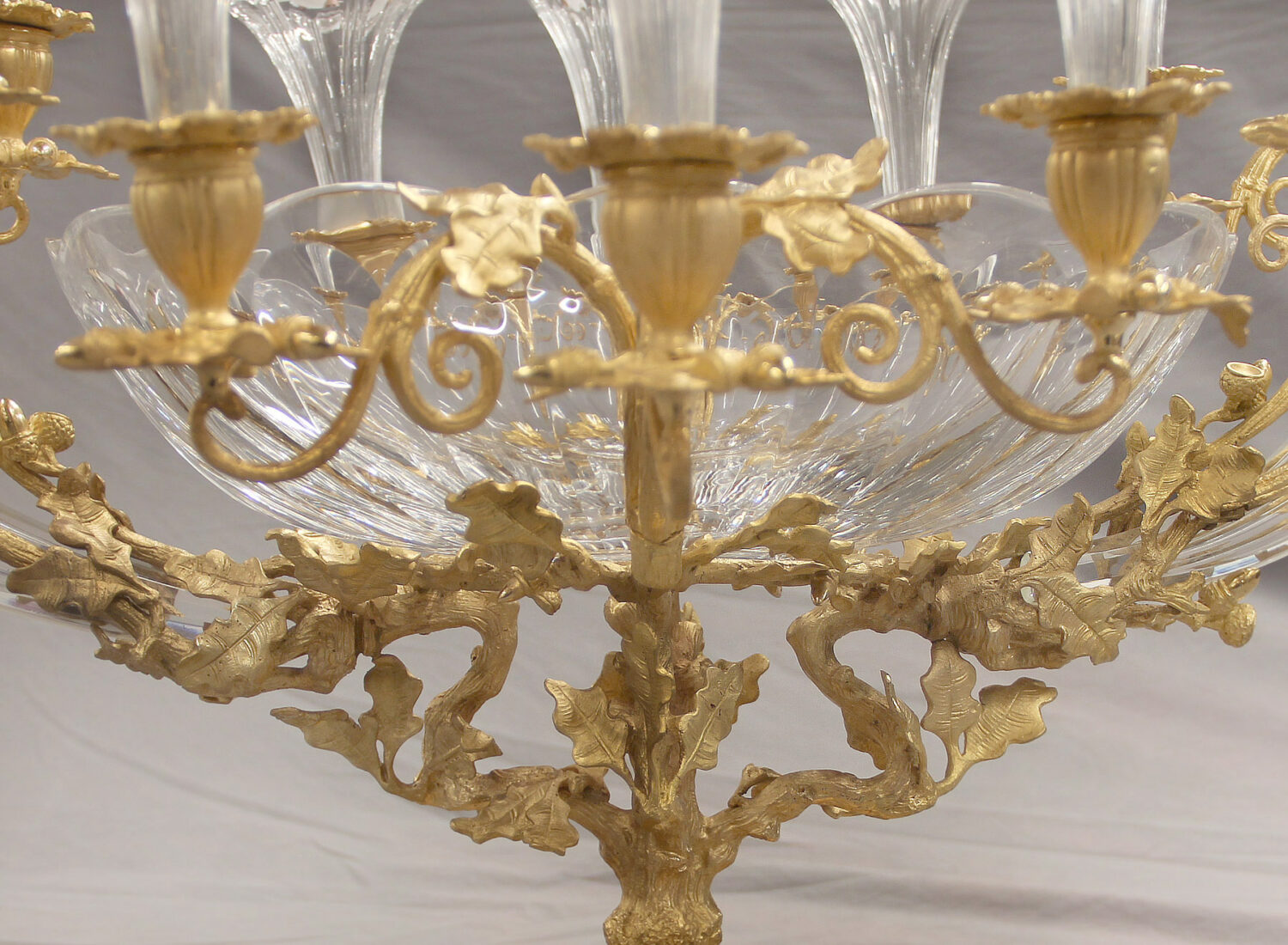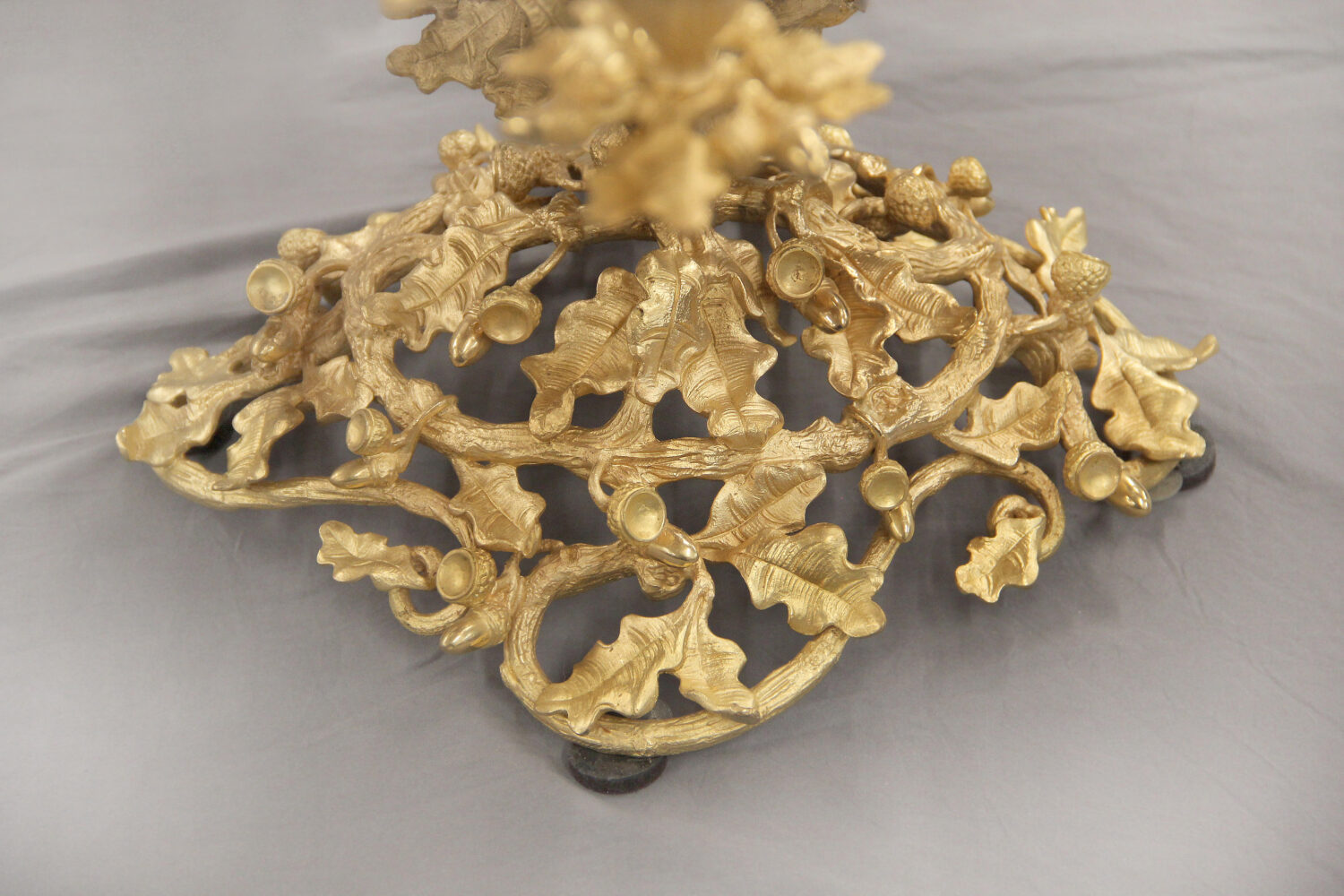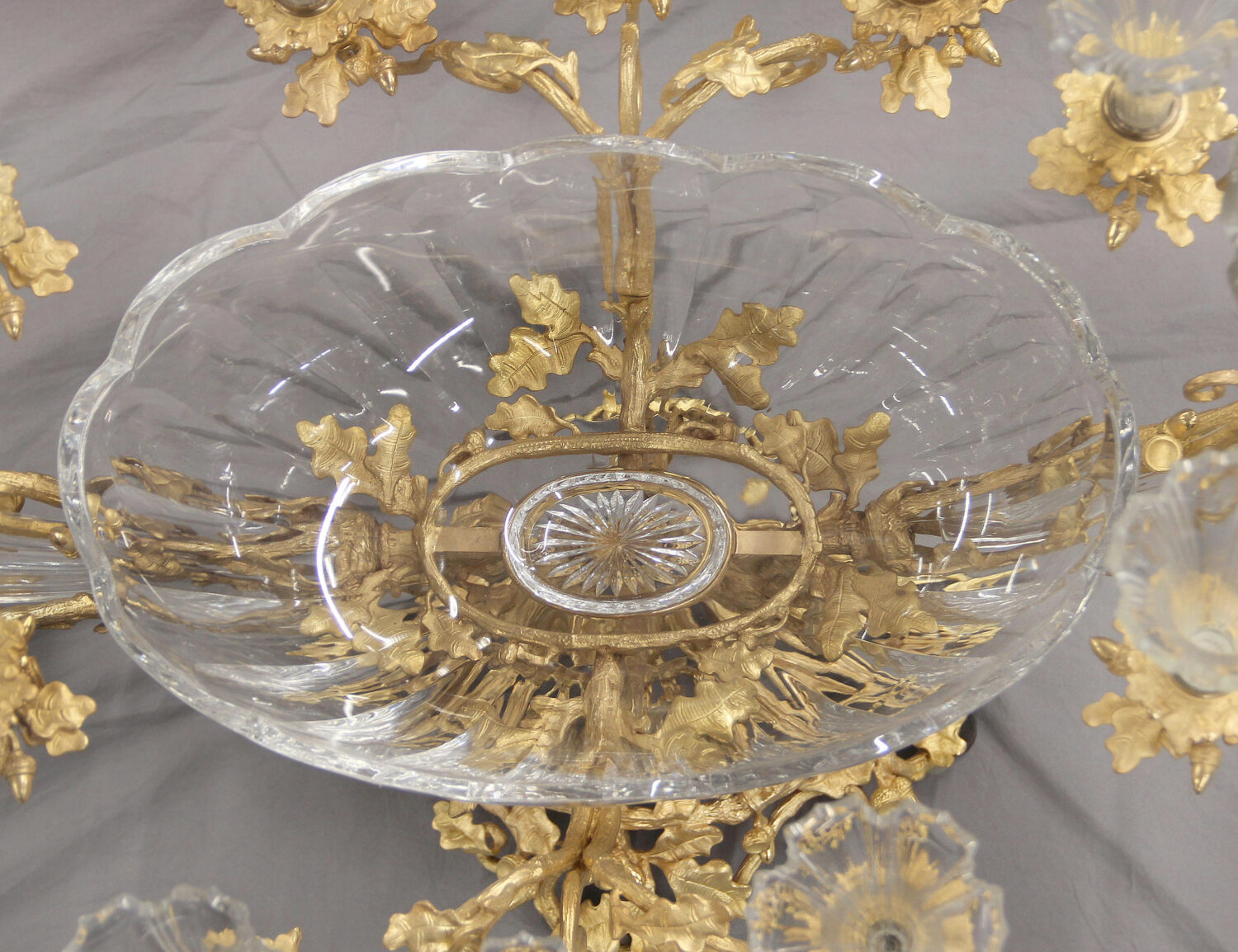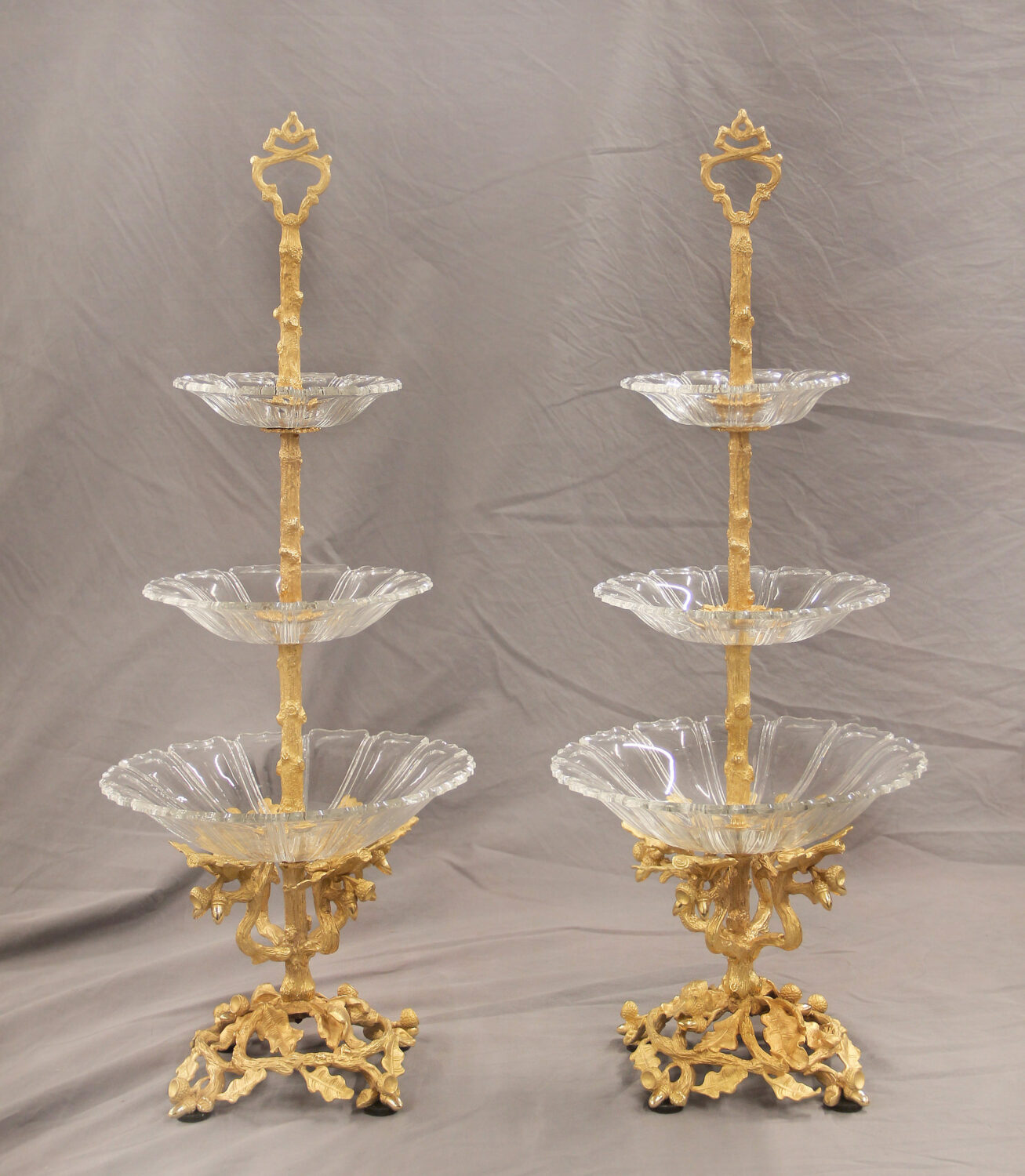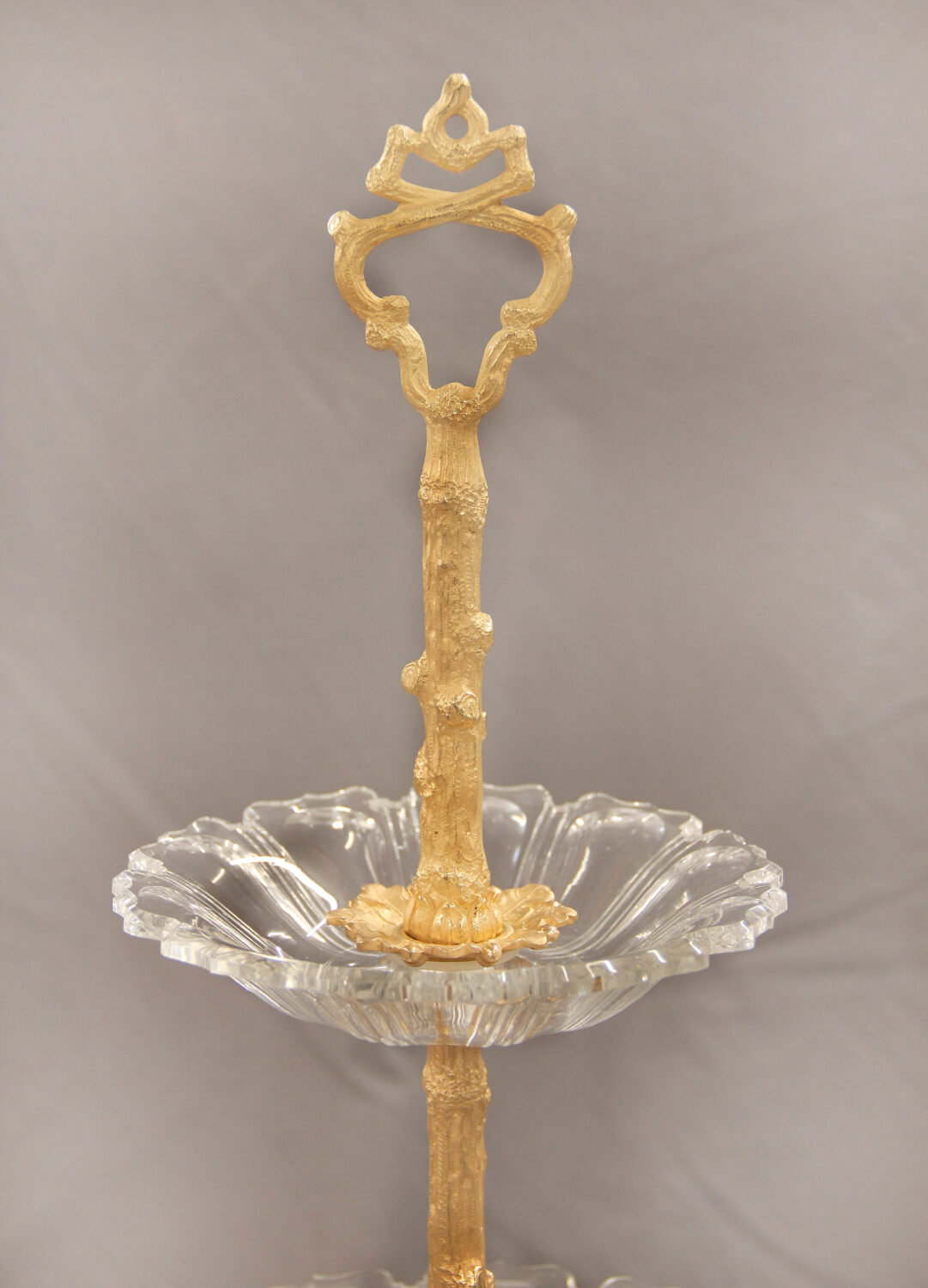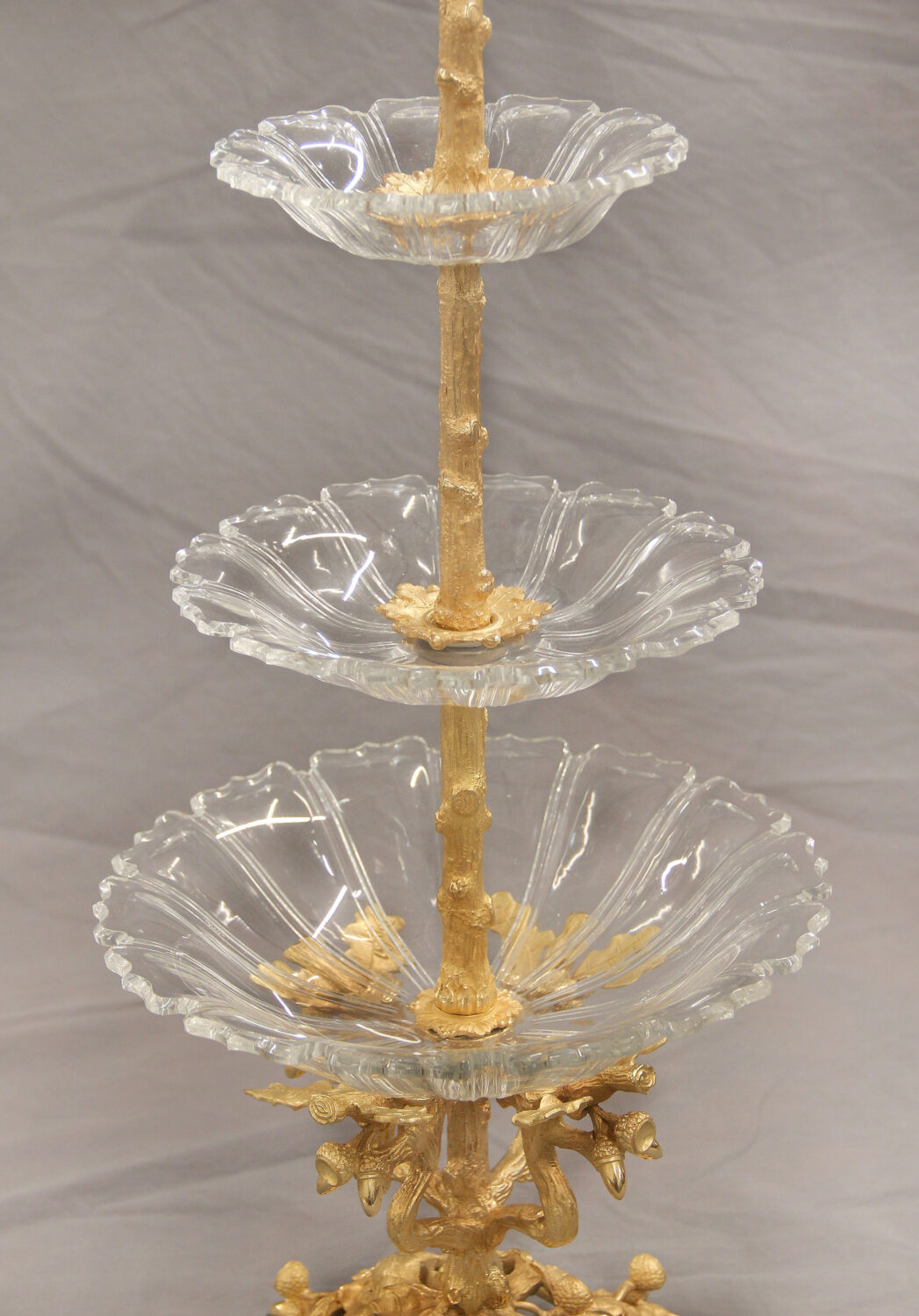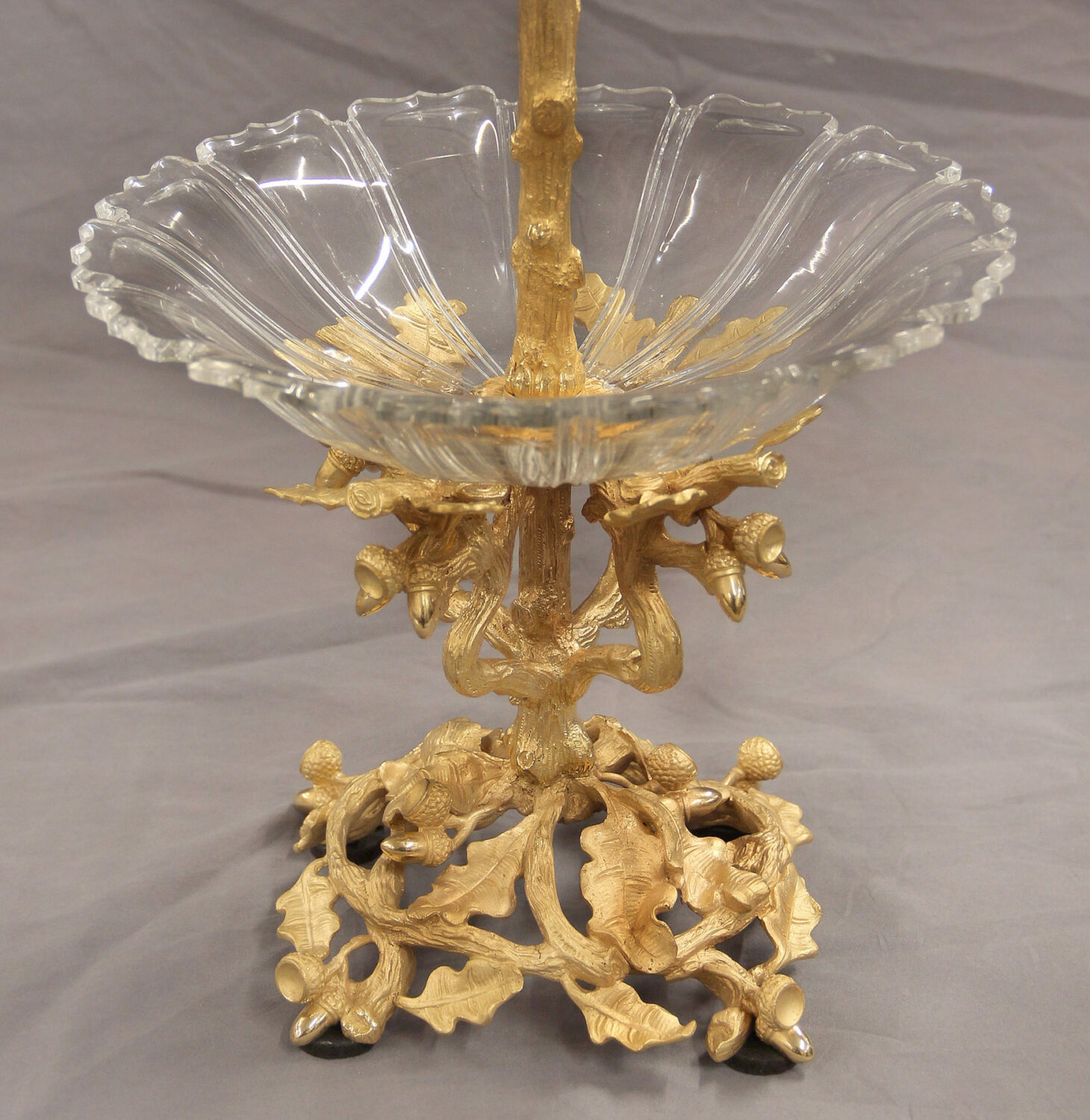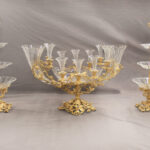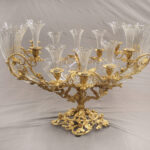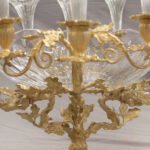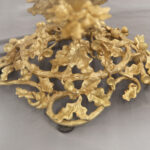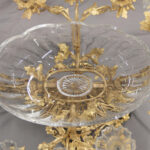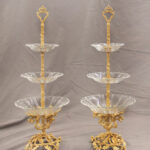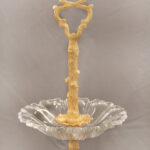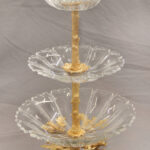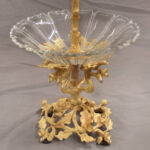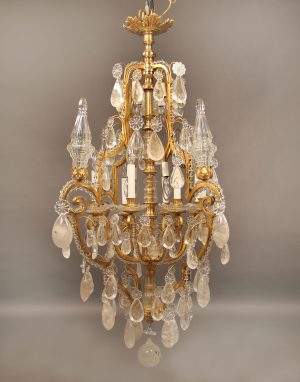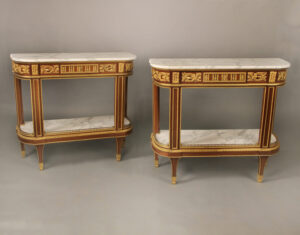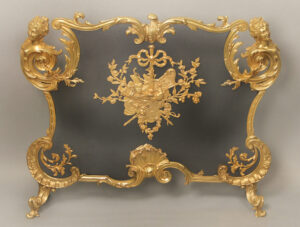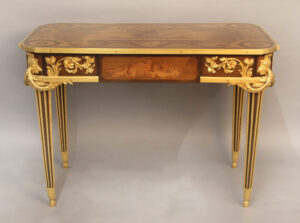A Large and Exceptional Late 19th Century Gilt Bronze and Cut Crystal Three Piece Garniture De Table By Baccarat
Item # CC1524
$67,500
Compagnie des Cristalleries de Baccarat
Comprising of a large centerpiece and a pair of etageres.
The centerpiece with central removable bowl within a fine gilt bronze frame modeled as oak branches, foliage and acorns, two large cornucopia shaped crystal flutes centered by ten smaller candle shaped crystal flutes with pedal edges.
The pair of three tier etageres stands similarly decorated with oak branches and acorns bases, three crystal bowls with pedal edges.
Founded in 1764 by royal consent, the firm of Baccarat became known as the Compagnie des Cristalleries de Baccarat in the nineteenth century. Francois-Eugene de Fontenay, who joined the company in 1841, discovered that the addition of nickel oxide in the manufacturing process resulted in a perfectly clear product, ‘crystal glass’, that was free of discoloration and that imitated precious rock crystal. For this discovery, the Baccarat company was awarded a gold medal at the French Expositions des Produits de l’Industrie in 1844. Continually experimenting with their manufacturing process, the quality of Baccarat’s ‘crystal glass’ improved, reaching the highest level by the end of the century. Today, Baccarat ‘crystal glass’ is highly regarded, not only for its unusual clarity, but for its great solidity and weight, allowing for the bold engraving and cutting that are Baccarat’s hallmark.
Baccarat is the world’s leading manufacturer of crystalware. Founded in 1764 under the patronage of Louis XV as Renault et Compagnie, the firm became known as the Compagnie des Cristalleries de Baccarat during the nineteenth Century.
The company began to flourish at the beginning of the Nineteenth Century, as the effects of the Napoleonic Wars abated, and its reputation was consolidated by the official approval from various sovereigns and heads of state. At the 1823 Exposition Nationale in Paris, it was Baccarat’s crystalware that Louis XVIII was said to have particularly admired, appreciating its ‘beautiful workmanship’.
The important fondeur and doreur Henri Picard worked in Paris from 1831 to 1884, most notably for the Emperor Napoléon III. He was based in Paris at 6, rue Jarente from 1831 to 1839, before moving to 10, rue de la Perle. The firm was active until around 1890.
Celebrated for the high quality of his production, Henri Picard supplied many important patrons, including garnitures and table pieces for the petits appartements of Emperor Napoléon III at the Louvre. An important pair of twelve-light candelabra by Picard remain in the Musée du Louvre today.
Centerpiece
Height – 20.5 inches / 52cm
Width – 32 inches / 81cm
Depth – 21 inches / 53cm
Etageres
Height – 29 inches / 74cm
Diameter – 11 inches / 28cm

